The Halogens - Testing for Ions (A-Level Chemistry)
Testing for Ions
In a chemical lab you will often be presented with an unknown compound and asked to identify it. Luckily, the nature of the ions presents can be easily figured out by systematically carrying out a series of qualitative tests.
Qualitative Analysis: Testing for Anions
Carbonate Ions
- Carbonate anions can be tested for by mixing the unknown compound with a dilute acid. If carbonate anions are present, they will react wit H+ in the acid to form CO2.

- Carbon dioxide turns limewater cloudy. Any carbon dioxide produced by the reaction between the acid and the carbonate anions, is collected via a collecting tube and bubbled through lime water. Carbon dioxide will react with lime water to give a white Calcium carbonate precipitate that turns the solution milky white.

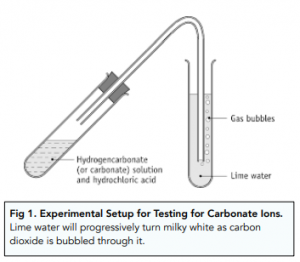
Sulfate Ions
- Sulfate anions can be tested for by the displacement of barium ions. If a small amount of barium chloride solution is added to an acidified solution of sulfate ions, a displacement reaction takes place in which the barium ions displace the cation in the sulfate compound to form a white precipitate of barium sulfate.
Halide Ions
- Halide ions can be tested for by mixing the unknown compound with acidified silver nitrate solution. Upon the addition of silver nitrate, a silver halide precipitate will form as a result of a displacement reaction. The colour of the precipitate will be different for each halide.
- To be sure of the identity of the halide, concentrated ammonia solution can then be added. Different silver halides will have different solubilities. Some silver halide precipitates will re-dissolve upon addition of ammonia solutions but others will not. Positive test results for different halide ions are collected in the table below.
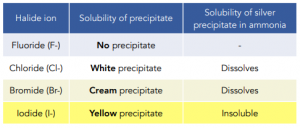
Qualitative Analysis: Testing for Cations
Ammonium Ions
- Ammonium cations can be tested for by mixing the unknown compound with warm, dilute NaOH (aq). If ammonium ions are present, ammonia gas will be given off, turning damp red litmus paper blue.
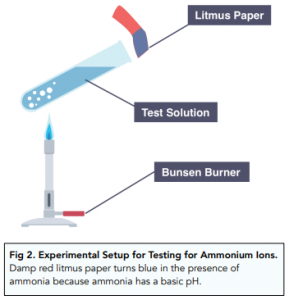
Group 1 and 2 Ions
- Group 1 and 2 ions can be tested for by using a flame test. Different metals will give differently colored flames.
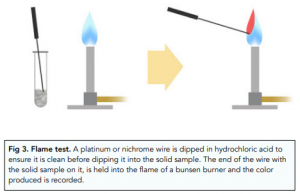
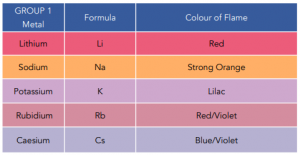
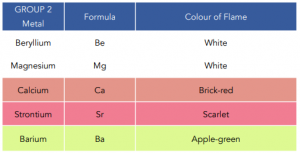
Halogens are a group of non-metal elements found in the periodic table, including fluorine, chlorine, bromine, iodine, and astatine.
Halogens have a negative one ionic charge in their compounds.
Halide ions can be tested using a variety of methods, including silver nitrate tests, chromate tests, and chloride ion-selective electrodes.
The silver nitrate test works by adding a solution of silver nitrate to a solution of the unknown halide ion. If the halide ion is present, a white precipitate of silver halide will form. The nature of the precipitate (whether it is soluble or insoluble) can be used to identify the halide ion.
The chromate test works by adding a solution of potassium chromate to a solution of the unknown halide ion. If the halide ion is present, a yellow precipitate of the chromate halide will form. The nature of the precipitate (whether it is soluble or insoluble) can be used to identify the halide ion.
Chloride ion-selective electrodes are electrochemical sensors that are specific for chloride ions. They work by measuring the difference in electrical potential between the electrode and the solution containing the unknown halide ion. This electrical potential can be used to determine the presence and concentration of chloride ions in the solution.
Yes, the silver nitrate and chromate tests can differentiate between the different halide ions by the nature of the precipitate formed (whether it is soluble or insoluble) and the color of the precipitate.
Yes, halide ion tests can be used in real-world applications, such as environmental monitoring, to measure the levels of halide ions in water, soil, and air samples. This information can be used to monitor environmental pollution and to ensure that environmental standards are met.
Testing for halide ions in a laboratory setting is important for a variety of reasons, including determining the identity and purity of a sample, and for quality control in industrial processes where halide ions are present.






Still got a question? Leave a comment
Leave a comment